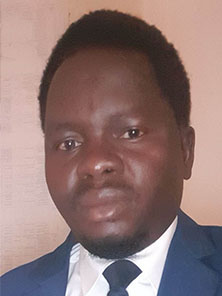By Gama Hassan Oscas
The Republic of South Sudan, the world’s youngest nation, has undergone significant political and policy changes since its independence in 2011. One such change is the shift in land ownership rhetoric from “land belongs to the community” to “land belongs to the people.” This transition, which began in 2005, has raised several critical questions and concerns among South Sudanese citizens, legal scholars, and international observers. This legal opinion seeks to provide a comprehensive analysis of this shift, examining its historical context, implications, and the motivations behind this change.
The shift in South Sudan’s land ownership rhetoric can be traced back to the period immediately preceding its independence. In the Comprehensive Peace Agreement (CPA) of 2005, a fundamental distinction was made between various categories of land. It was stipulated that South Sudanese land would be divided into three categories:
National Land: This category included resources like forests, animal reserves, swamps (Sudd), subterranean minerals, and mountains, among others. The management and regulation of this land were placed under the authority of the Central or national government.
Communal Land: Communal land was defined as territories traditionally and historically identified as the settlements and economic zones of each ethnic group in South Sudan. These areas encompassed various activities such as ranching, hunting, farming, water catchments, reservoirs, and hills.
State Land: This category comprised residual land, and it was stipulated that a comprehensive survey and demarcation of South Sudan’s territory would be conducted according to these three categories.
The intent behind these categorizations was to provide a clear framework for land governance and management. However, in recent years, there has been a noticeable shift in the language used to describe land ownership, particularly the transition from “community” to “people.”
The transition from “land belongs to the community” to “land belongs to the people” raises several questions and concerns. It is essential to understand the implications of this shift and the potential motivations behind it.
One significant question that arises is the absence of a clear plan regarding the transition in land ownership rhetoric. Despite the change in language, there has been limited transparency in outlining how this transition will be implemented. The lack of a well-defined plan has left South Sudanese citizens, particularly those in rural areas who heavily depend on communal land for their livelihoods, in a state of uncertainty.
Another critical question pertains to the timing of this shift. The current government has moved to introduce this transition at a time when the Revitalized Agreement on the Resolution of the Conflict in South Sudan (R-ARCSS) has already run its course. The country is moving towards drafting and promulgating a permanent constitution, which will necessitate the rewriting of all laws, including land laws, to align with the new constitution. The question that arises is: Why is the land policy being drafted before the permanent constitution?
The use of the term “people” in the new land ownership rhetoric has been vague and open to interpretation. It is essential to scrutinize who exactly is being referred to as “the people.” Some argue that it may allude to the government, which could give the government broader authority and control over land resources. This ambiguity has raised concerns about the potential concentration of power and resources within the government, at the expense of local communities.
A significant aspect of this transition is the explicit mention of the need for land for investors. South Sudan, like many developing nations, is attractive to investors due to its vast natural resources. However, the concern is that the investors mentioned are often the elite ruling class of South Sudan, who may have vested interests in land. There is a fear that the land policy may be manipulated to benefit the privileged few at the expense of local communities.
The transition from “land belongs to the community” to “land belongs to the people” carries far-reaching implications for South Sudan’s land governance and the rights of its citizens. Some of the key implications include:
The shift in terminology could potentially erode the traditional land rights of South Sudanese communities. Communal land, historically managed and governed by local communities, may be subject to central government control. This could result in a loss of agency and autonomy for local populations over their land and resources.
The vagueness in the terminology and the potential allusion to the government as “the people” raises concerns about a concentration of power. It may provide the government with greater authority to allocate land and resources, potentially favoring political elites and investors over the broader population.
The explicit mention of land for investors raises questions about the nature of foreign investment in South Sudan. While foreign investment can bring economic benefits, there is a risk that it may lead to land grabbing and exploitation of natural resources without adequate protection for local communities.
The absence of a clear plan and legal framework for the transition in land ownership rhetoric has created a legal void. This lack of clarity can result in disputes, conflicts, and legal challenges, further complicating land governance in the country.
Understanding the motivations behind the shift in land ownership rhetoric is crucial in assessing its potential impact on South Sudan. While the government has not provided a comprehensive explanation, several factors may shed light on why this transition is occurring.
The abundance of natural resources in South Sudan, including oil, makes it a valuable destination for foreign investment. The explicit mention of investors in the new land policy suggests that economic interests may be a driving force behind the shift. This is particularly concerning if it favors the elite ruling class.
Shifting land ownership rhetoric to “land belongs to the people” could be a means to consolidate political control. By framing the government as the representative of “the people,” it may be easier to assert authority over land and resources, potentially diminishing the autonomy of local communities.
The timing of the shift is notable, as it occurs before the drafting of a permanent constitution. This could be driven by expediency, as the government may seek to secure its interests and consolidate power before the establishment of a new legal framework that may provide more checks and balances.
South Sudan has faced international pressures and scrutiny due to conflict, human rights abuses, and political instability. The shift in land ownership rhetoric may be influenced by international actors seeking stability and economic development in the region.
In conclusion, the shift in South Sudan’s land ownership rhetoric from “land belongs to the community” to “land belongs to the people” is a complex and contentious issue. This transition raises significant questions about its timing, motivations, and implications for land governance, community rights, and the role of foreign investors.
As South Sudan progresses toward drafting a permanent constitution, it is crucial to ensure that land policies are developed with transparency, consultation with local communities, and the protection of their rights in mind. This legal opinion does not pass judgment on the intentions behind the shift but calls for a thorough and open discussion to address the concerns and uncertainties raised by this transition. Ultimately, the land of South Sudan should serve the interests and well-being of all its people, safeguarding their rights, culture, and economic sustainability.
The author of this opinion piece is an advocate and can be reached on email at: oscarsgama@gmail.com




